Tomato plants demand particular nutrients to flourish and yield a large amount of juicy fruits. Among such nutrients that are beneficial to tomato plants is magnesium in Epsom salt. Therefore, this article tries to dig into the right amounts of Epsom salts that can adequately nourish tomato plants. By understanding how Epsom salt functions in the care of tomato plant, gardeners will make sure that their plants remain healthy and productive. So if you are an experienced green thumb or a beginner in gardening, this manual will give you real-life tips on how to optimise your tomato plant care with Epsom salt.
When considering the right quantity of Epsom salts for use on tomato plants, the average recommendation is mixing one tablespoon of Epsom salt with water per gallon, applied two weeks apart for each foot high they grow. This combination assists in dealing with deficiencies of magnesium in the soil which encourages strong growth and healthful fruit development.
What is Epsom Salt and Why Use Epsom Salt for Tomato Plants?
Epsom salt is a mineral compound that occurs naturally and contains magnesium, sulfur, and oxygen. Because it can improve soil magnesium deficiencies, which are important for plant health, this salt is widely used in horticulture. Epsom salts also help chlorophyll production in tomato plants because they are essential in the photosynthesis process, improving nitrogen absorption as well as other vital nutrients such as phosphorus. Using Epsom salt on tomatoes results in stronger plants with greener leaves and tastier fruits.
Making sense out of Epsom Salts
The addition of Epsom salts to gardening practices is quite valuable due to the presence of magnesium and sulphur which are essential for the health of plants.Magnesium increases chlorophyll production leading to better photosynthesis thus enhanced uptake up of essential nutrients by the plant while sulfur helps to create vitamins, amino acids, and enzymes which aid overall plant vitality.Epsom Salt application can correct Magnesium deficiency for tomato plants resulting into stronger greener foliage better nutrient uptake and increased fruit quality both in terms of taste and number produced.
Magnesium Sulfate: The Essential Nutrient for Tomatoes
Tomato plants need magnesium sulfate or what we call Epsom salts if they are to grow best. This provides a source of magnesium that enables chlorophyll synthesis necessary for photosynthesis thereby facilitating nitrogen and phosphate absorption accordingly.
Recommended Rate:
- Soil Application: Where soil lacks magnesium when planting put one tablespoonful per hole. For routine applications around the base dissolve one tablespoonful per gallon every fortnight.
- Foliar Spray: When leaves show symptoms such as yellowing between veins spray leaves with two tablespoons mixed with a gallon water every fifteen days.
Incorporating these methods will ensure that tomatoes get enough magnesium required for healthy growth, leading to quantitative and qualitatively high yields.
How Does Epsom Salt Help Tomato Plants?
Tomato plants have several advantages to gain from when Epsom salt is used as it provides the necessary magnesium and sulphur. The ability of the plant to harness energy through photosynthesis depends on adequate amounts of magnesium that aids in better absorption of nutrients. A greater part of plant health can be traced back to the role played by sulfur which creates vital enzymes and proteins. Better root systems, leaf color, and fruit production are some of the benefits achieved through an oversupply. Besides, it can also prevent blossom-end rot as well as leaf curling, which occur frequently during tomato farming activities. This way, a healthier tomato plant will be guaranteed that is likely to give higher yields.
How Much Epsom Salt Should You Use for Tomato Plants?
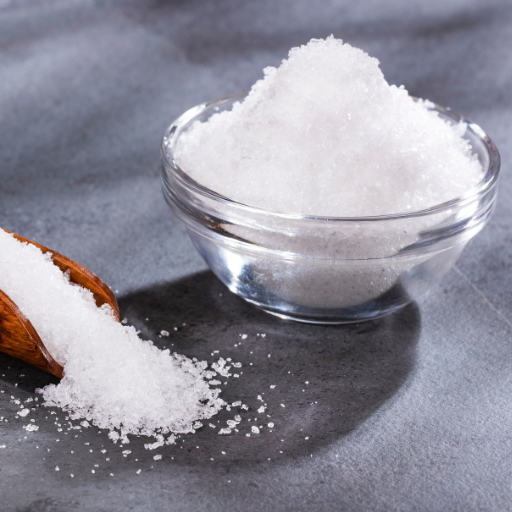
You should generally use one tablespoon of Epsom salt per foot of tomato plant. This can be mixed into the soil when planting or dissolved in water for root drenching or foliar spraying. Dissolve two tablespoons of Epsom salt in a gallon of water and apply it onto the leaves after every two weeks for foliar application purposes. Adjust the application frequency depending on whether plants are manifesting symptoms associated with deficiency, ensuring that important nutrients are provided adequately so that over-fertilization does not occur. After each application always water well to ensure that the Epsom salt dissolves and reaches the roots efficiently.
Amounts Suggested: Tablespoons of Epsom Salt Per Plant
The right amount of Epsom salt to use on tomatoes depends on how you are applying it; as such, amounts will vary. Add 1 tablespoon Epsom salt per foot height when incorporating into soil. Mix this with soil at time of planting or mix into top inch for established plants. Dissolve 1 tablespoon epsom salt in 1 gallon water and apply it to base of each plant every two weeks for root drenching. Dissolve 2 tablespoons epsom salts in 1 gallon of water and spray directly onto leaves and do this twice a month for foliar spraying. When using this method, thoroughly water afterwards to enhance proper distribution within the root system from where it acts most effectively Avoid excessive magnesium levels through changing fertilizer response based on macronutrient requirement.
The Right Measurement Techniques: Using Spoons & Measuring Cups
Your first concern when measuring out Epsom salts should be precision so that your plants get exactly what they need. Approximately fifteen milliliters or half an ounce is equal to a tablespoon. Use a standard measuring spoon to scoop out measured quantities for specific applications such as these ones.Laying your knife flat against brim makes level off correct measure teaspoonfuls For instance, in cups, 1 cup is equal to 16 tablespoons and 240 millilitres. For example if you need two tablespoons of epsom salt a similar measurement would be an eighth cup. Use clean dry utensils every time you measure so that there isn’t any contamination.
Preventing Overuse: Signs of Too Much Epsom Salt
Tomato plants can sustain several adverse effects from excessive use of Epsom salt. A major sign of overdose includes leaf scorch where the leaves’ edges turn brown and crispy. This indicates high levels of magnesium that cause nutrient lockout for essential elements such as calcium and potassium which are important in tomato growth. Another symptom is stunted growth; while moderate Epsom salt application promotes healthy growth, too much can result in the opposite effect due to nutrient lockout. In addition to this, the leaves may be yellow or droopy because it has excess magnesium in soil, which leads to imbalance of nutrients.
Your Epsom salt usage should be monitored based on the response from your plants at all times. The range between 50-120 ppm (parts per million) for magnesium should be attained through conducting a soil test for magnesium levels in the field/soil since it provides insight into actual soil fertility status for magnesium component.Regularly checking plant health status with respect to soil condition will help prevent over-fertilization thus maintaining healthy growing conditions.
When and How to Apply Epsom Salt to Tomato Plants
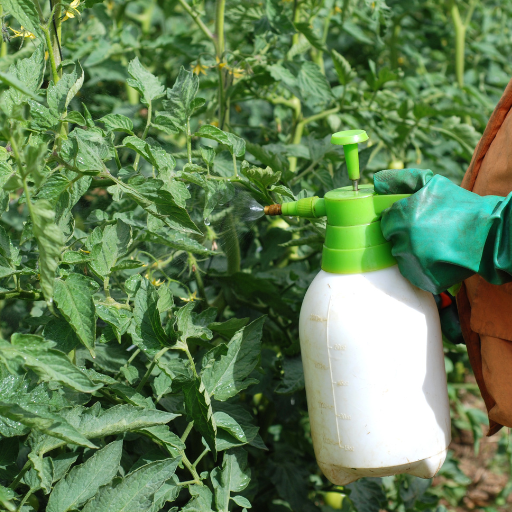
Applying Epsom salt to tomato plants for it to be effective, you need to integrate it at different stages of the plant’s growth. Add 1 tablespoon of Epsom salt in the planting hole when transplanting seedlings to promote good root development at first. Throughout the growing season 1 tablespoon of Epsom salt can be mixed with a gallon of water and applied as a foliar spray twice monthly for nutrient uptake. Side-dressing established plants by sprinkling 1 tablespoon of Epsom salt around the base of each plant side every four to six weeks. Always, ensure that you water your crops well after application so that the Epsom salts dissolves and are readily absorbed into the soil.
The Best Time
To put Epsom salt onto tomato plants properly, you had better consider early morning or late afternoon hours. This timing allows slow evaporation of solution hence making plants take up nutrients efficiently. On top, during planting seedlings’ blossoming or setting fruits is the best time for applying Epsom salts among other times since these particular stages require large amounts of magnesium as an essential nutrient necessary for active growing roots together with quick sprouting flowers as well as healthy fruit development. Repeated applications over every four-six weeks can aid in ensuring healthy growth throughout the season resulting in high productivity.
Application Methods: Soil vs Foliar Spray
When choosing between soil application and foliar spray as means of applying Epsom salt to tomatoes, one must consider the advantages and proper situations for each.
Soil Application:
This is where you mix your fertilizer directly with soil upon which roots will eventually get all their required Magnesium and Sulfur As time goes on. This method works perfectly when correcting long-term deficiencies and giving slow release patterns of nutrients needed by soils. The rate recommended is 1 tablespoon per foot plant height spread throughout down soil surrounding base plant although some add more such as Organic gardening. Proper watering must be done during the application to enable the salt dissolve and go through the roots.
Foliar Spray:
It is a method where you dissolve Epsom salt in water and spray it onto leaves of tomato plants. It helps in faster absorption of nutrients into foliage because they are taking up from the solution through the leaf surface. For foliar application, mix 1 tablespoon of Epsom salt in a gallon of water and spray it on the leaves after every two weeks. Apply foliar sprays early morning or late afternoon so as to reduce evaporation and maximize absorption.
Technical Parameters:
- Epsom Salt Concentration: Use one tablespoon per 1 gallon of water for soil and foliar applications.
- Application Frequency: Soil treatment should be applied every four to six weeks while foliar sprays should be used every two weeks.
- Absorption Time: Foliar sprays offer quick nutrient uptake, while soil applications provide more sustained nutrient supply.
Each method has its own advantages and can be applied side by side to address different growth stages and nutrient requirements of tomatoes.
Guidelines for Application in Vegetable Gardens that will be Successful
- Soil Testing and Preparation:
- Conduct a soil test to determine the current nutrient levels and pH balance. This way, you’ll learn the felt needs of your vegetable garden and adjust the dosage of Epsom salt accordingly. Before anything else, remove weeds and debris from the soil and till it to allow good aeration and drainage.
- Application Timing:
- The best times on which to apply Epsom salt is during planting or throughout growing season. mix Epsom salt into the soil at the planting site when planting new plants. When leaves start yellowing on plants during growth season, that is a clear sign that they are deficient in magnesium for which reason it should be applied.
- Proper Dosage:
- Use recommended amount for both foliar application and soil treatment. For every 4-6 weeks pour 1 tablespoon of Epsom salts per foot high around base of plants into plant soil in case of soil treatments. For foliar sprays, dissolve one tablespoonful of Epsom salts in one gallon water and spray foliage fortnightly.
- Watering:
- Water them adequately after applying Epsom salt to the ground to facilitate the dissolution of this substance and the absorption of nutrients through their roots. Make sure you water your crops regularly, especially when you are experiencing dry spells, so that they have enough moisture content.
- Monitoring and Adjustments:
- Always Check up on your plants all the time if they have any nutrient deficiencies or excesses by use of standard procedures. Based on how well these crops respond plus any changes witnessed in their vegetative growths like leaves size; one can either increase or reduce frequency or quantity applied respectively. Keep checking out whether there is still yellowing happening continuously, if not then be sure other symptoms such need amendments addition fertilizer exists
Can Epsom Salt be Used Alongside Other Fertilizers and Soil Amendments?
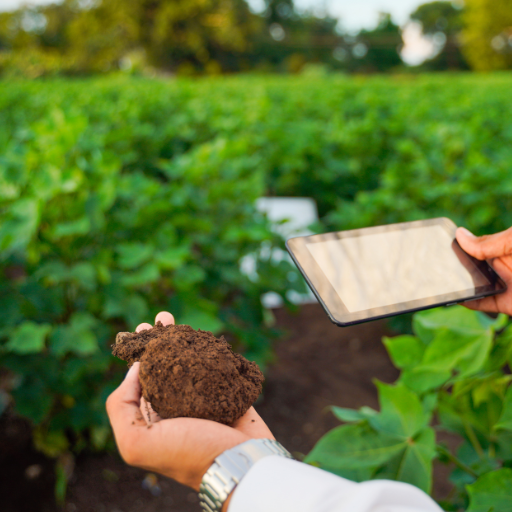
In addition, Epsom salt can be used with other fertilizers and soil amendments. For example, by mixing Epsom salt with a balanced fertilizer, it is possible to get a complete nutrient supply for the plants. However, while Epsom salt will provide magnesium and sulfur, different fertilizers can give the necessary nutrients such as nitrogen, phosphorus, and potassium. Nevertheless, these products should be used in accordance with recommended dosages and application guidelines since excessive application may hurt the plant.
Additionally, Epsom salt can be applied to specific plants showing magnesium deficiency even when other soil amendments are in place. In conclusion, other methods of fertilization can be used with Epsom salts if all mineral levels in the medium are kept right.
Epsom Salt Mixed Together With Home-made Compost And Other Garden Fertilizers
When mixed together with compost and other garden fertilizers it is important that one remains balanced while doing this process. Also complementing compost by providing essential micronutrients like Magnesium Sulphur which might not be enough in organic matter alone.However for sustainable results while applying to compost put an equal volume of epsomsalt at the exact dose prior to its application.Additionally when incorporating epsomsaltsignificantly take into account the particular nutrient requirements of individual plants thus avoiding over-fertilization.In order to boost health growth on your vegetation’s life cycle keep regulating nutrient balances cautiously.
Integration Of Epsom Salt With Soil Testing And Treatment For Tomatoes
If you want to incorporate epsomsalt into your routine tomato cultivation programs then consider conducting a soil test first to determine existing nutrient level as well as pH.Such tests identify any Mg or S deficiencies or imbalances that could be addressed through using Sulphate-Fert-Mag.Basing on your test results you can apply it at an adequate rate usually 1 tablespoon per foot tall plant either sprinkled around stem base or dissolved in water for foliar feeding.Such a practice is done frequently basing on the soil type usually every 4-6 weeks to ensure that tomatoes are provided with balanced nutrients and no over application occurs.
Prospective Interactions And Compatibility
In general, Epsom salts can interact with different elements found in the soil to determine its compatibility with other garden products. By any means, there might be increased nutrient uptake when organic compost is combined with Epsom salt because they both provide essential nutrients needed by the plant for normal functioning of body organs such as leaves. Epsom salt should not be mixed into the same fertilizer as chemicals because an excess of magnesium could inhibit absorption of other vital minerals including calcium and potassium. Regular soil testing helps prevent these potential imbalances. Likewise, Epsom salt can be used in organic gardens but it should not be overdone since it alters soil structure negatively leading to nutrient lockout hence affecting plants’ growth positively without any compatibility problems.
What Are the Signs of Magnesium Deficiency in Tomato Plants?
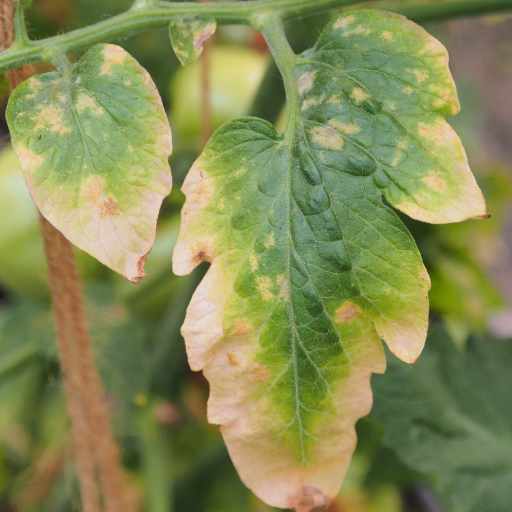
Symptoms for magnesium deficiency in tomato plants are usually seen in the foliage itself. Among these, interveinal chlorosis stands out as the most obvious one where leaves turn yellow between green veins starting with the old ones from the plant’s base. Moreover, affected leaves may become curled upwards with brittle textures around them. Sometimes, leaf edges or tips may turn brown or display necrotic spots on them. Magnesium deficient plants may also exhibit retarded growth and reduced fruit yield. Consequently, regular monitoring and timely treatment of these symptoms can help restore plant health and improve productivity.
How to identify magnesium deficiency
Magnesium deficiency is a common tomato problem that needs early identification for effective correction. Juxtaposed to green veins, inter-vein chlorosis is its main symptom which shows yellowing of leaves between green veins beginning with the older leaves at the base of plants. Also, upward curling of leaves especially with dryness along their edges and tip can be evident on occasion. The pace of plant increase could slow down tremendously while substantial decline in fruit production might be observed .Important technical parameters include soil magnesium content (25–50 ppm) and maintaining soil pH at 6.0-6.5 for optimal magnesium uptake , Soil testing can easily monitor these levels and guide adjustments when necessary.
Control measures through Epsom salt application
One effective cure for tomato plant magnesium deficiencies is Epsom salt or Magnesium sulfate.The prevention technique involves dissolving one tablespoonful of Epsom salts into a gallon of water this solution should be applied to soil around plants once every two weeks.Foliar sprays are also beneficial; mix one tablespoonful of Epsom salts into a gallon of water then spray onto leaves directly once every two weeks.Using this technique allows faster uptake through the foliage.Regular use not only prevents magnesium deficiency but also improves crop yields by enhancing plant vigor.Therefore, it is important that concentration levels are monitored and adjusted by testing the soil magnesium levels.
Magnesium as a Nutrient Deficiency Corrector
Epsom salt, commonly known as magnesium sulfate, is very good at correcting plant nutrient deficiencies. It supplies readily available magnesium and sulfur which are two crucial nutrients needed for various plant processes. Magnesium is vital for photosynthesis because it is a central component of chlorophyll molecule; it also activates enzymes and helps synthesize nucleic acids. On the other hand, sulfur formation of amino acids, proteins and vitamins. Magnesium sulfate when used as a soil amendment or foliar spray can quickly correct these deficiencies such that essential nutrients would be obtained through both leaves and roots of plants thus allowing them to absorb this element more rapidly. Thus improved production of chlorophyll leads to healthier plant growth with enhanced enzyme activity among others. With continuous use done according to prescribed rates per year, there will be no future deficiencies hence optimal health of plants will be maintained.
What Are Common Misconceptions about Using Epsom Salt for Tomato Plants?
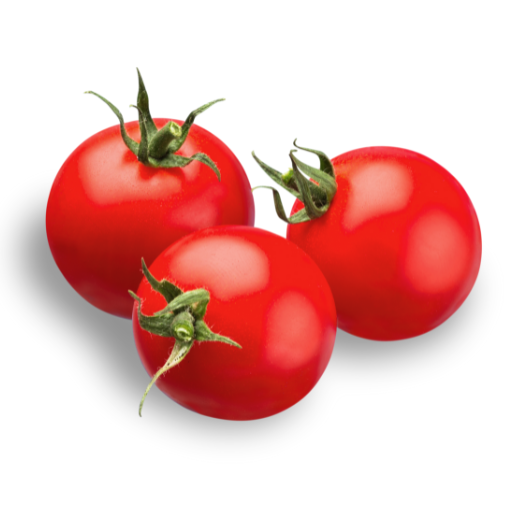
A lot of people have a wrong understanding of how Epsom salt can help tomato plants, thinking that it can solve all nutrient problems and improve the overall health of the plant by itself. However, apart from magnesium and sulfur, which are provided by Epsom salt, it does not give other vital nutrients like nitrogen, phosphorus or potassium needed for proper growth of plants. Some also believe that they should use too much Epsom salt but in truth over applying this leads to nutrient imbalance in the soil posing a threat to these crops. Finally, some people think that putting Epsom salts on tomatoes will stop blossom-end rot; however this condition is mostly caused by calcium deficiency not magnesium deficiency and therefore fixing the calcium problem in soil is better.
Epsom Salt Misconceptions
However there are myths surrounding its ability to cure all tomato plant issues – it only supplies magnesium and sulphur which are essential for plant growth but does not provide other vital nutrients such as nitrogen , phosphorous or potassium. Too much application of Epsom salt could lead to an imbalance in soil nutrients leading to harm on plants rather than improvement. Other misconceptions include that tomato plants need epsomsalt for blossoms end rot prevention .Nevertheless,this disease mainly occurs due to lack of calcium while scarcity of magnesium has no significant effect on blossom end rot.Controlling availability of calcium in soil is practical strategy against blossom end rot.
Common Mistakes Made While Applying Epsom Salt Into The Soil
- Too Much Use Of Epsom Salt: One common mistake farmers make when applying epsomsalt is using them excessively. Overabundance of Magnesium ion may result into poor uptake of main elements like Calcium therefore leading to poor crop health with possible nutrient imbalances.
- Soil Test Ignorance: There are many gardeners who use epsomsalt without testing their soils first if they have low levels of Mg. Unnecessary application can make a lot of magnesium be present thus harming your garden than helping it.
- Treating Epsom Salt As A Complete Fertilizer: While Epsom salt can supply magnesium and sulfur, it lacks other essential nutrients like nitrogen (N), phosphorus (P), and potassium (K). Relying on only Epsom salts as the sole source of plant nutrition may lead to other deficiencies and poor growth.
Reference sources
- Quora
- Source: How much Epsom salt is needed for tomato plants?
- Suggests the ideal solution ratio of 1 tablespoon of Epsom salt per foot of plant height for nourishing tomato plants, providing a practical guideline based on plant size.
- Giant Veggie Gardener
- Source: Epsom salt for tomatoes and peppers | giantveggiegardener
- Recommends using a foliar spray of 1 tablespoon of Epsom salt per gallon of water when tomato plants flower to help set more blossoms, supporting healthy growth.
- Harvest to Table
- Source: Epsom Salt, Milk, and Organic Fertilizers for Tomatoes and Peppers
- Advises using one tablespoon of Epsom salt per gallon of water for foliar spraying, especially if applying more frequently than once a month, initiating the spraying process when blooms first appear for optimal results in nourishing tomato plants.
Frequently Asked Questions (FAQs)
Q: How much Epsom Salt is needed to nourish tomato plants?
A: To nourish tomato plants, you should dilute 1 tablespoon of Epsom Salt per gallon of water and apply it to the soil around the plants.
Q: What nutrients do tomatoes and pepper plants gain from Epsom Salt?
A: Tomatoes and pepper plants benefit from the magnesium and sulfur in Epsom Salt, which help in chlorophyll production and nutrient absorption.
Q: Can I use Epsom Salt for plants other than tomatoes?
A: Yes, Epsom Salt is a natural mineral that can be used for various plants as it helps in the development of plant cell walls and overall growth.
Q: How often should I use Epsom Salt for plants like tomatoes and peppers?
A: Use Epsom Salt for plants like tomatoes and peppers once every two weeks, ensuring you dilute it properly.
Q: Why do tomatoes need magnesium and sulfur?
A: Tomatoes need magnesium and sulfur because these nutrients are crucial for photosynthesis and the formation of healthy fruit.
Q: What are the benefits of Epsom Salt for tomato and pepper plants?
A: Epsom Salt is beneficial because it provides essential nutrients, like magnesium and sulfur, that enhance the plant’s growth and improve yield quality.
Q: Can Epsom Salt harm my plants if used incorrectly?
A: Yes, overuse of Epsom Salt can lead to nutrient imbalances in the soil, so it’s important to dilute the recommended amount per gallon of water.
Q: Where can I purchase Epsom Salt for my garden?
A: Epsom Salt can be purchased at most garden shops, and it’s also good to explore options on online platforms such as an amazon influencer’s storefront.
Q: Is there a particular time of year to start using Epsom Salt for plants?
A: You can start using Epsom Salt for your plants during the growing season, typically from the start of spring when planting begins.
Q: How does Epsom Salt support self-sufficiency in any size backyard garden?
A: Epsom Salt supports self-sufficiency in any size backyard garden by providing essential nutrients that enhance plant growth, leading to stronger and healthier plants.






